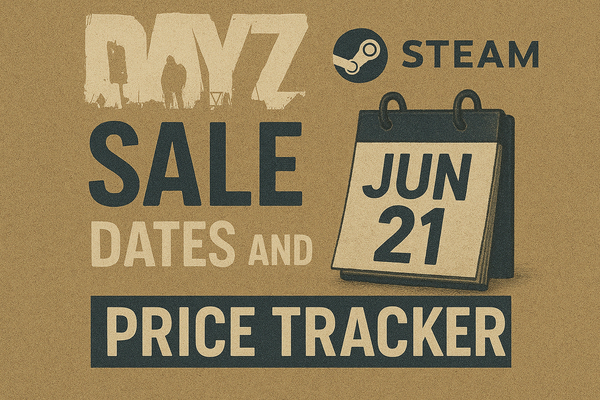Step-by-Step Walkthrough for a Balanced Scorecard Template
Master the Balanced Scorecard with our step-by-step guide. Learn how to align strategy with performance metrics for business success.

In today’s fast-paced business world, organizations need a strategic approach to measure performance and align their actions with long-term objectives. The Balanced Scorecard (BSC) is one of the most effective tools for achieving this goal. Developed by Drs. Robert Kaplan and David Norton, the Balanced Scorecard bridges the gap between an organization's mission and tangible outcomes by integrating multiple performance perspectives.
A Balanced Scorecard isn’t just a performance measurement tool—it’s a strategic management system that enables companies to track objectives, optimize daily operations, and ensure long-term sustainability. It helps businesses translate their vision and strategy into actionable goals, balancing financial and non-financial aspects.
In this guide, we will walk you through everything you need to know about creating and implementing a Balanced Scorecard template for your business. You will learn:
- What a Balanced Scorecard is and how it works
- The core components of a Balanced Scorecard
- The four key perspectives and their role in business success
- The step-by-step process to create an effective BSC template
- The benefits and drawbacks of using a Balanced Scorecard
- Examples of Balanced Scorecard applications
- Best practices for implementing the Balanced Scorecard
- The best tools for designing your BSC
Let’s dive in!

What is a Balanced Scorecard?
The Balanced Scorecard (BSC) is a business management tool that provides a structured approach for tracking performance and making strategic decisions. It integrates financial metrics with non-financial performance indicators, enabling organizations to gain a holistic view of their business health and strategy execution.
Unlike traditional performance measurement tools that focus solely on financial data, the Balanced Scorecard approach considers four key perspectives:
- Financial Perspective – Focuses on revenue, profitability, and financial stability.
- Customer Perspective – Measures customer satisfaction, retention, and loyalty.
- Internal Processes Perspective – Evaluates the efficiency of operations and business processes.
- Learning & Growth Perspective – Assesses employee training, innovation, and knowledge management.
By aligning these perspectives, businesses can identify areas for improvement, track progress, and drive sustainable success.
How Does the Balanced Scorecard Work?
The Balanced Scorecard works as a comprehensive management system that uses data-driven insights to track business performance. Here’s how:
- Strategic Planning – Establish clear goals and objectives for the organization.
- Performance Measurement – Define Key Performance Indicators (KPIs) for each perspective.
- Data Collection – Gather real-time data to analyze business operations.
- Actionable Insights – Use the collected data to refine strategies and drive improvements.
- Continuous Monitoring – Review performance regularly to ensure strategic alignment.
By following these steps, organizations can streamline operations, improve decision-making, and align their strategy with execution.
The Four Key Perspectives of a Balanced Scorecard
1. Financial Perspective
This perspective assesses the organization’s financial performance and overall economic health. Key indicators include:
- Revenue Growth
- Profitability & Net Income
- Return on Investment (ROI)
- Cost Reduction Metrics
- Operational Efficiency
2. Customer Perspective
Understanding customer needs and improving customer experience is vital for long-term success. This includes:
- Customer Satisfaction Scores
- Customer Retention & Loyalty
- Brand Awareness & Market Share
- Net Promoter Score (NPS)
3. Internal Business Processes Perspective
This perspective tracks operational efficiency and workflow improvements. Key indicators include:
- Product Quality & Defect Rates
- Process Automation & Innovation
- Production Cycle Times
- Supply Chain Management Efficiency
4. Learning & Growth Perspective
This evaluates employee development and organizational capabilities. It includes:
- Employee Training & Skill Development
- Workforce Productivity & Engagement
- Technology & Innovation Adoption
- Knowledge Management Systems
How to Create a Balanced Scorecard Template [Step-by-Step Guide]
Follow these seven steps to design an effective Balanced Scorecard template:
Step 1: Identify Strategic Objectives
Define the key goals your organization wants to achieve. These should align with your vision and long-term growth plans.
Step 2: Set Key Performance Indicators (KPIs)
Each objective needs measurable KPIs. For example, if your objective is improving customer satisfaction, the KPI could be increasing NPS by 10% in six months.
Step 3: Assign Weight to KPIs
Not all metrics are equally important. Assign weights to reflect their strategic significance.
Step 4: Develop a Strategy Map
A strategy map visually represents how different objectives interconnect. It helps stakeholders understand cause-and-effect relationships.
Step 5: Implement the Scorecard Across Departments
Communicate the Balanced Scorecard framework across teams and integrate it into your company’s performance review processes.
Step 6: Track Performance and Collect Data
Monitor results periodically to ensure alignment with business objectives. Adjust strategies as necessary.
Step 7: Continuous Review and Optimization
Refine the scorecard based on feedback and evolving business needs.
Pros and Cons of Using a Balanced Scorecard
Pros
- Enhances Strategic Alignment
- Provides a Holistic Business View
- Encourages Data-Driven Decision Making
- Improves Communication & Employee Engagement
- Optimizes Performance Tracking & Resource Allocation
Cons
- Complex Implementation Process
- Requires Accurate Data Collection
- Time-Consuming Updates & Maintenance
Best Practices for Implementing a Balanced Scorecard
- Define Clear Goals & KPIs – Ensure metrics align with strategic objectives.
- Use Data Analytics Tools – Leverage business intelligence software for data-driven insights.
- Foster Employee Engagement – Communicate goals clearly and train employees to interpret KPIs.
- Regularly Update Your BSC – Business needs evolve, so refine metrics periodically.
Tools to Create a Balanced Scorecard Template
- Microsoft Excel & Google Sheets – Simple and customizable templates
- Smartsheet & ClickUp – Project management tools with built-in scorecard features
- Tableau & Power BI – Advanced analytics and visualization tools
Conclusion
The Balanced Scorecard is a powerful strategic management tool that helps organizations align their mission with measurable outcomes. By integrating financial, customer, internal process, and learning perspectives, businesses can track performance comprehensively.
By implementing a Balanced Scorecard template, you can:
- Improve strategic decision-making
- Enhance business performance
- Ensure continuous growth and innovation
Start using a Balanced Scorecard today and gain a competitive edge in your industry!
Source: How to Do a Balanced Scorecard Template [Walkthrough Guide]
Don’t forget to explore our previous post: Create a Checkbook Register Template in Simple Steps





